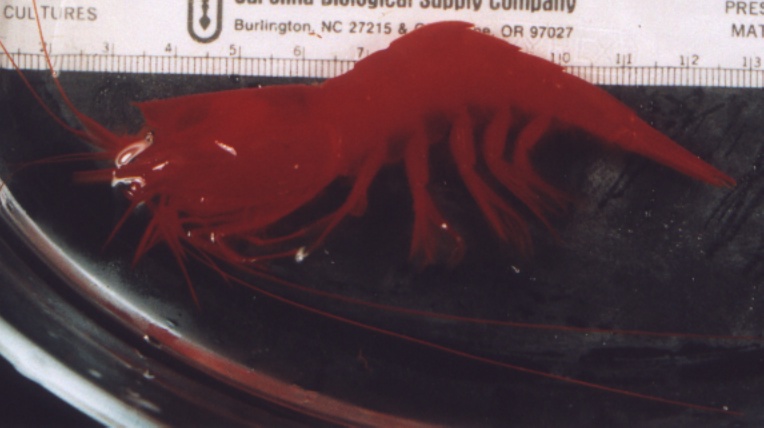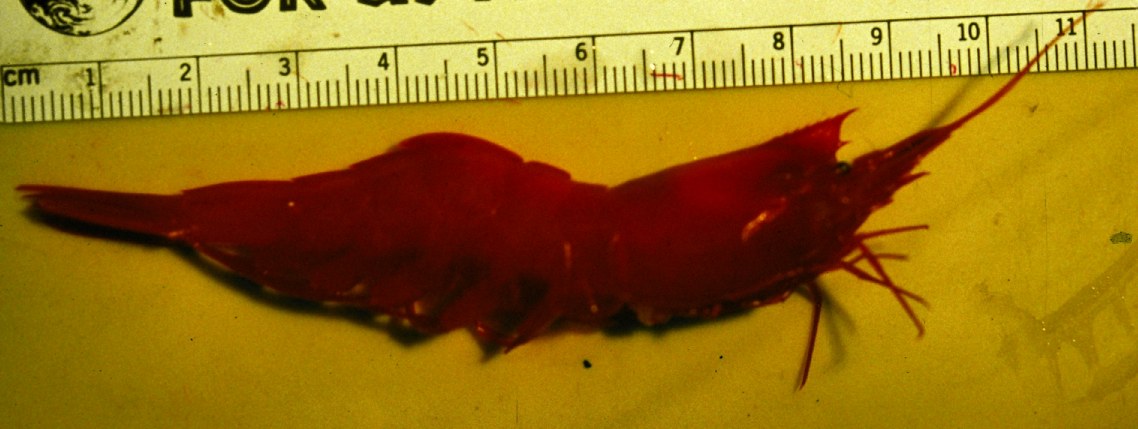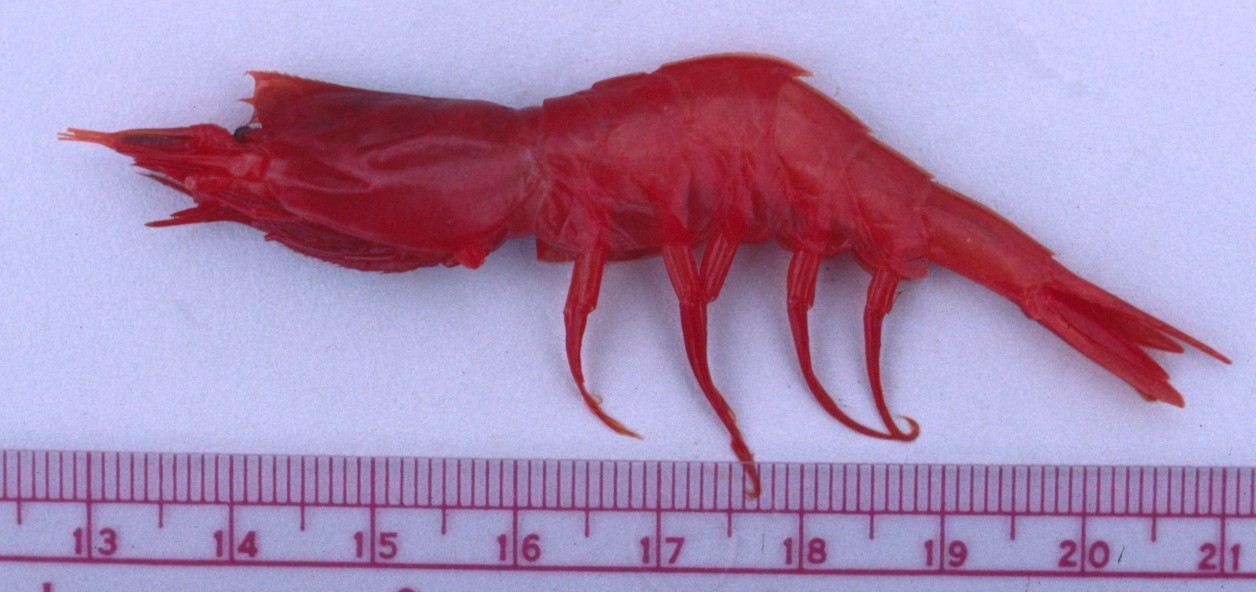Acanthephyra curtirostris Wood-Mason, 1891Common name(s): Peaked shrimp |
|
| Synonyms: |  |
| Phylum Arthropoda
Subphylum Crustacea Class Malacostraca Subclass Eumalacostraca Superorder Eucarida Order Decapoda Suborder Pleocyemata Infraorder Caridea (true shrimp) Family Oplophoridae |
|
| Acanthephyra curtirostris, caught at about 500 m depth off Point Conception, CA | |
| (Photo by: Dave Cowles, May 1996) | |
How to Distinguish from Similar Species: This species looks rather similar to the rare A. brevirostris and A. chacei, and to A. smithi, which grows larger, is found farther south, and has a more acute rostrum. Few other species have the distinctively shaped rostrum.
Geographical Range: Worldwide at lower latitudes; to 51 degrees north in the Eastern Pacific.
Depth Range: Deep midwater, 200 - 2200 m
Habitat: Midwater
Biology/Natural History: This bathypelagic midwater shrimp is an active, steady swimming predator but does not vertically migrate. A cosmopolitan species at tropical and subtropical latitudes, there is substantial genetic distance between populations separated by large geographical distances (such as between California and Hawaii, John F. Scarbrough dissertation, Loma Linda Universtiy 2004). It is less common this far north than it is in tropical and subtropical waters.
| Return to: | |||
| Main Page | Alphabetic Index | Systematic Index | Glossary |
References:
Dichotomous Keys:Kozloff 1987, 1996
Wicksten, 2009
General References:
Butler,
TH (1980). Shrimps of the Pacific Coast of Canada. The
Canadian Bulletin
of Fisheries and Aquatic Sciences 202: 1–280
Chase, Fenner A., 1986. The Caridian Shrimps (Crustacea: Decapoda) of the Albatross Philippine Expedition, 1907-1910, Part 4: Families Oplophoridae and Nematocarcinidae. Smithsonian Contributions to Zoology Number 432. Paperback, 82 pp.
Hendrickx, Michel E. and Flor Delia Estrada navarrete, 1996. Los Camarones Pelagicos (Crustacea: Dendrobranchiata y Caridea) del Pacifico Mexicano. Comision Nacional para el Conocimiento y Use de la Biodiversidad. Paperback, Spanish 157 pp. ISBN 968-29-8882-9
Scientific Articles:
Cowles, D.L, J.J.,Childress, and M.E.Wells (1991). Metabolic rates
of midwater crustaceans as a function of depth occurance off the
Hawaiian
Islands: Food availibility as a selective factor? Marine Biology 110:
75–83
Krygier, E.E and W.G. Pearcy (1981) Vertical Distribution and biology of pelagic decapod crustaceans off Oregon. Journal of Crustacean Biology 1: 70–95
Wasmer, Robert A., 1967. Bathypelagic shrimps (Penaeidea and Caridea) from the eastern North Pacific. Master's thesis, Walla Walla College, College Place, WA. 86 pp.
General Notes and Observations: Locations, abundances, unusual behaviors:

Another photo of this species. Dave Cowles, 1995.
Caught
off southern CA.
Click Here
for a mpg video
of this shrimp and a description, taken by me on shipboard in 1996 off
Point Conception, CA (9 megabytes)
This species is widespread. Below is a photo of the
same species
caught off Oahu, Hawaii.

Acanthephyra curtirostris from midwater off Oahu,
Hawaii.
Photo by Dave Cowles, July 1987
Authors and Editors of Page:
Dave Cowles (2005): Created original page